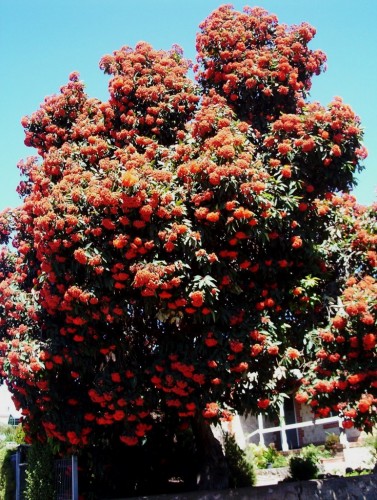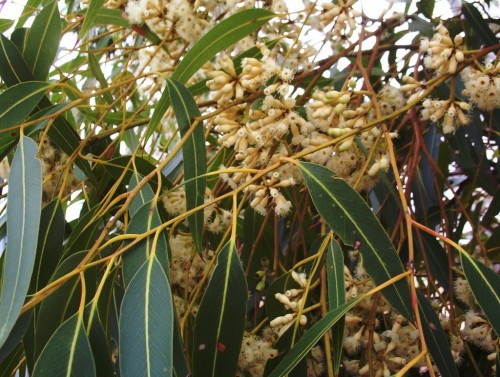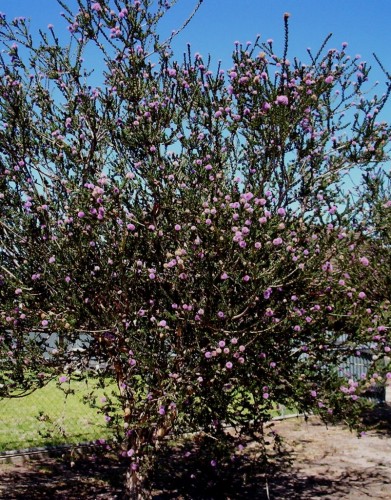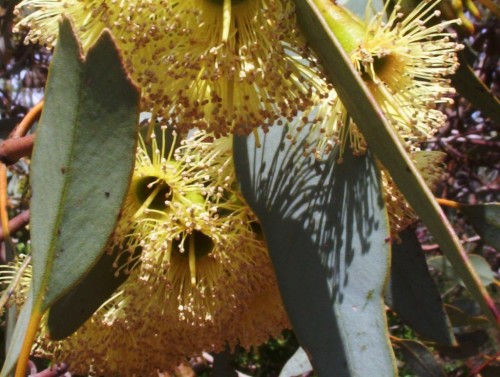Eucalyptus stricklandii (Yellow-flowered Blackbutt)
This is another of those lovely Western Australian trees that are very decorative in flower.
More articles about Australian birds can be found on Trevor’s Birding.
Eucalyptus ficifolia (Western Australian Flowering Gum)
I took the camera out this morning to take photos of the different colour forms of Eucalyptus ficifolia (Western Australian Flowering Gum). The hot north winds that we have had lately have finished the flowers on some trees. There is a lovely deep red form I could not get close to so I will have to knock on the door and ask if I can invade their backyard.
More about Eucalyptus ficifolia here.
Eucalyptus cladocalyx ‘Nana’ (Bushy Sugar Gum)
This is a smaller version of Sugar Gum and is very hardy. This particular form comes from Kangaroo Island and Eyre Peninsular in South Australia. It is drought tolerant being grown in Israel without irrigation. We have found it to be quite drought and frost hardy here but severe frost may cause damage while the plant is young. This is an excellent plant for a wind break with other tall shrubs because of its more compact growth and bushy habit. It appears that it is difficult to establish other plants under this species because of its competitive root system. This tree is about 5m tall here and can grow to 15m tall. The trunk is beautiful when wet.
Melaleuca nesophila (Showy Honeymyrtle)
This very hardy plant reads almost like the perfect plant to grow. Apart from not liking severe frost, it will grow practically anywhere. The information says that it will tolerate salt spray, acid to very alkaline soil and lime. Many Melaleucas will grow in quite damp soils and this is one of them, as well as growing in very dry conditions. It also takes hard cutting and trimming which makes it ideal for wind breaks and hedges. Apart from that it is also a very pretty plant.
Eucalyptus pimpiniana (Pimpin Mallee)
Eucalyptus pimpiniana grows to about 2 metres. It grows in western South Australia where it is classed as rare. Flowering is from December to June and the Honeyeaters love it. One book I read says that frost tolerance is not fully tested. In Blyth it would have survived very severe frost this last winter. This is a plant for dry areas and full sunshine and also alkaline soil. I think it would also make a magnificent potted plant in a large tub.






